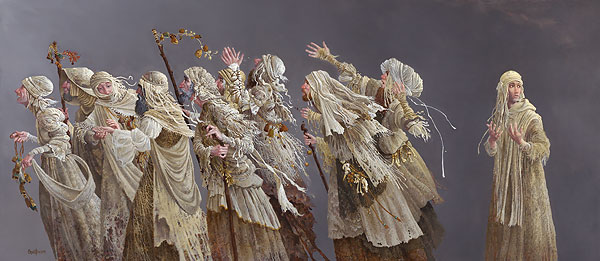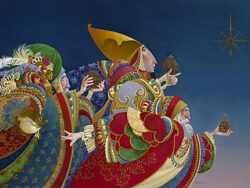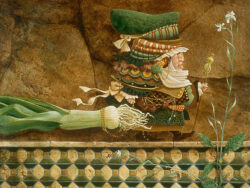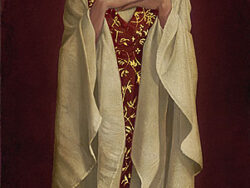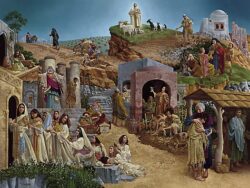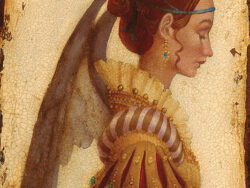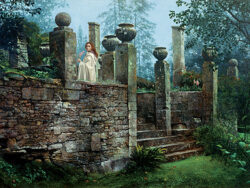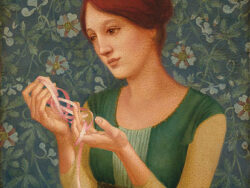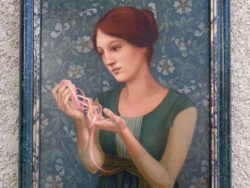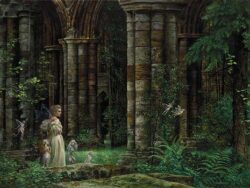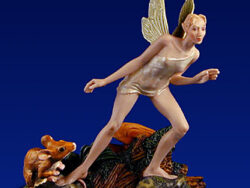TEN LEPERS
$995.00 – $3,800.00Price range: $995.00 through $3,800.00
“And one of them, when he saw that he was healed, turned back, and with a loud voice glorified God, And fell down on his face at his feet, giving him thanks: and he was a Samaritan. And Jesus answering said, Were there not ten cleansed? but where are the nine? There are not found that returned to give glory to God, save this stranger. And he said unto him, Arise, go thy way: thy faith hath made thee whole.” Luke 17:15-19
As he did with “The Widow’s Mite,” James Christensen interprets one of the Bible’s more powerful stories and presents us with an image of elegance, grace and beauty. At the same time he engages us in one of the higher promises of art: provoking thought. In fact, the art of reflection is at the core of the painting’s message.
The “Ten Lepers” were a group of men cured of their disease through one of Christ’s miracles. Their tattered wrappings suggest what was, until this moment, their illness. Of the ten, nine are too preoccupied celebrating their new lease on life to think of anything else, much yet thank him. The tenth, at this moment, grasps truly what has occurred. He is the only one that returns to acknowledge the Master.
This image provides an inspiring reminder to take a moment from our fast-paced world and reflect on what we have to be thankful for. And, just as importantly, to take the time to show this gratitude.
| size | 34"w x 15"h limited edition paper, 50"w x 22"h limited canvas |
|---|
Related products
James Christensen
James Christensen
James Christensen
James Christensen
James Christensen
James Christensen
James Christensen
James Christensen
James Christensen
James Christensen
James Christensen
James Christensen

